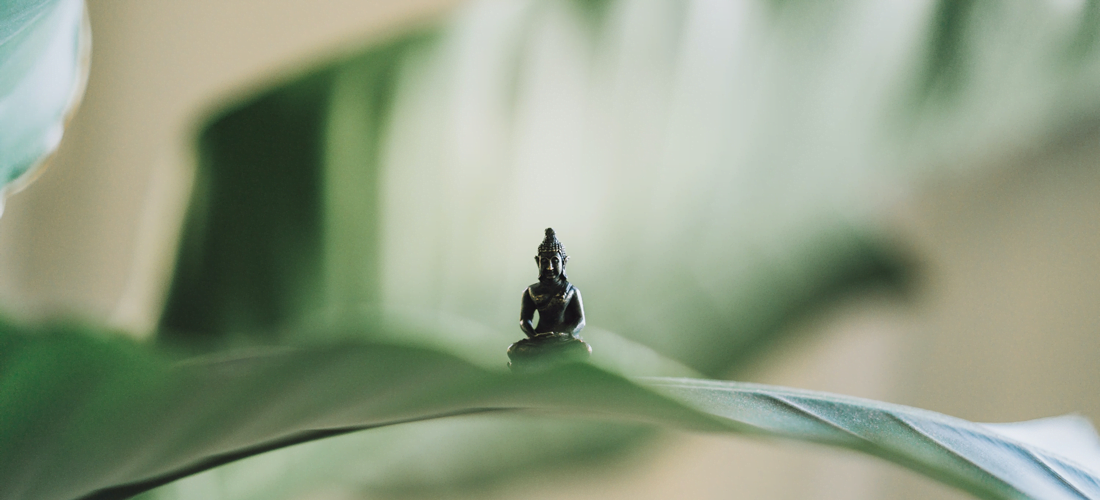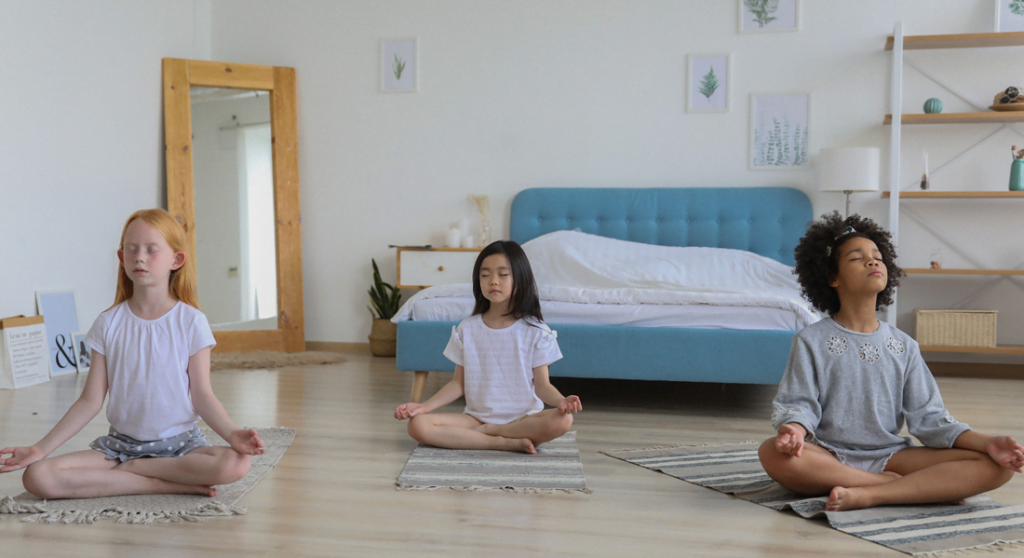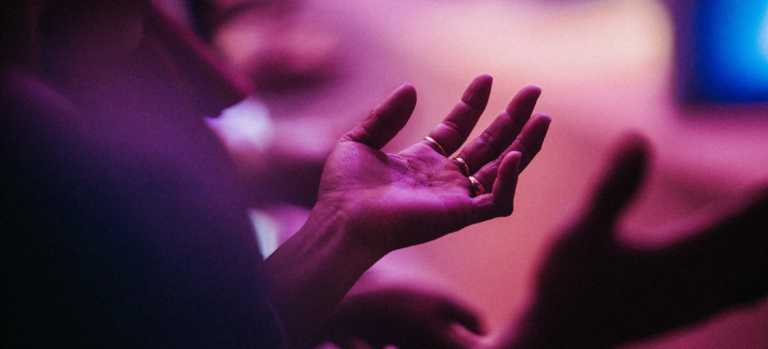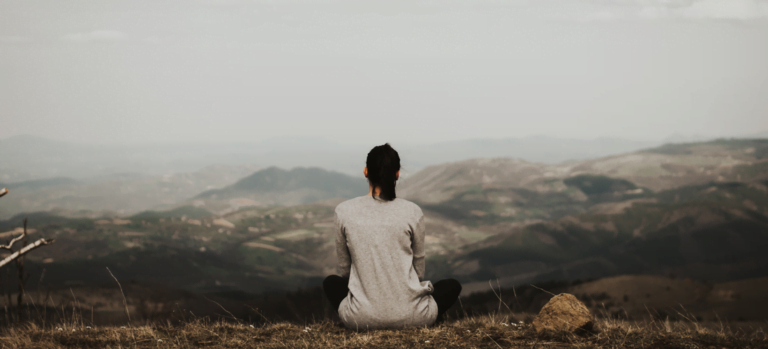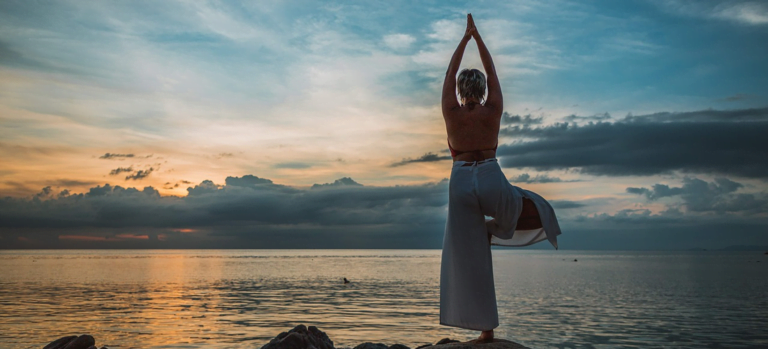Today we’re exploring the transformative power of a daily meditation routine for solitude and focus. Brimming with incessant noise, distractions, and pressures, the quest for solitude and focus in today’s world is more than just a luxury – it’s a necessity. These twin pillars serve as our refuge, helping to declutter our minds, regain balance, and foster inner peace. By investing time in a dedicated meditation practice, we can nurture a sense of solitude that gives us space to breathe, and cultivate focus that enables us to navigate life with more clarity and purpose.
The purpose of establishing a daily meditation routine revolves around its potential to transform our lives. Imagine it as a personal retreat that we give ourselves each day, a sanctuary where we can escape the chaos and distractions of the external world. This practice allows us to tap into our solitude, providing an opportunity to reflect, understand ourselves better, and tune into our thoughts and emotions. At the same time, it enhances our focus, teaching us to control our attention, make clear decisions, and manage our tasks efficiently. To put it simply, a daily meditation routine is like a compass that guides us towards a more mindful and fulfilling life.
Benefits of a Daily Meditation Routine for Solitude and Focus
Meditation offers a wealth of benefits for those seeking solitude and focus in their daily lives. Firstly, it encourages self-awareness, allowing us to gain a deeper understanding of our own minds. When we meditate, we are alone with our thoughts, providing an opportunity to reflect and practice self-compassion. This helps us deal with our emotions more effectively and promotes a sense of calm and tranquility.
Secondly, meditation enhances cognitive abilities, particularly focus and concentration. When we meditate, we practice directing our attention to a single point, such as our breath or a mantra. This trains our mind to concentrate, helping us stay focused in our daily tasks and activities. It also enhances our ability to ignore distractions and maintain productivity.
Through promoting solitude and improving focus, meditation can significantly enhance our mental well-being, emotional resilience, and overall life satisfaction. It’s a simple yet powerful tool we can all use to navigate the complexities of modern life.
Setting the Scene: Creating a Meditation Space
Creating a tranquil meditation space is all about finding a spot that feels calm and inviting to you. First, find a quiet and clean area in your home where you won’t be disturbed. This could be an unused corner of your room, a peaceful outdoor spot, or even a small space in your closet. Minimalism is key – the fewer distractions, the better. Try adding elements that promote serenity, like a comfortable cushion, a candle, or some calming artwork. Muted colors and soft lighting can also help set a peaceful mood. Remember, this space doesn’t need to be big or fancy. It’s your personal sanctuary for focus and peace.
Morning Meditation Routine
Starting the Day with Mindfulness
Starting your day with mindfulness sets a positive tone for the rest of your day. Begin by sitting comfortably in your meditation space, allowing yourself to settle into the present moment. As you close your eyes, transition your focus to your breathing – notice each inhalation and exhalation. You’re not aiming to change your breath, just observing its natural flow. This simple act helps you connect with the present moment, fostering a sense of peace and calm.
Mindfulness meditation in the morning is like setting a mental baseline for your day, helping you stay focused, patient, and grounded in the hustle and bustle of daily life. Over time, you’ll notice that this morning routine not only improves your day but also your overall life quality by reducing stress and promoting a more balanced mindset.
Techniques for Morning Meditation
Here are some practical techniques to incorporate in your morning meditation routine:
- Mindful Breathing: This technique is as straightforward as it sounds. Start by focusing on your breath, observing the sensation of inhaling and exhaling. If your mind wanders, gently guide it back to your breathing. This simple exercise helps you stay present and centered.
- Body Scanning: Body scanning is a form of mindfulness that promotes a deep connection with your physical self. Start at the top of your head and gradually move down to your toes, observing any sensations, discomfort, or tension. Remember, you’re not trying to change anything or judge these sensations, just noticing them.
- Loving-Kindness Meditation: Also known as Metta meditation, this technique involves directing well-wishes and positive energy towards yourself and others. Start by focusing on your own well-being, repeating phrases like “May I be happy. May I be safe. May I be healthy.” Afterwards, direct these sentiments toward your loved ones, and eventually, all beings everywhere.
- Gratitude Meditation: Starting your day with a sense of gratitude can foster positivity and contentment. Think about things in your life that you appreciate, no matter how big or small, and take a few moments to really feel that appreciation.
- Visualization: Visualization is a powerful technique where you imagine a peaceful and serene place or situation. It could be a beautiful beach, a cozy mountain cabin, or anything that makes you feel relaxed and happy. Visualization can help reduce stress and instill a sense of calm.
Integrating Meditation into Morning Rituals
Incorporating meditation into your morning rituals is an excellent way to start the day centered and focused. Here are some tips to integrate your daily meditation routine into your morning:
- Wake Up Earlier: By waking up a little bit earlier, you can dedicate specific time to your meditation without feeling rushed. A quiet house in the morning can provide the perfect solitude you need for focus.
- Meditate After Physical Activity: If you engage in morning exercises such as yoga or jogging, consider meditating right after. Physical activity helps wake up the body, making it easier to sit comfortably and focus during meditation.
- Create a Comfortable Space: Identify a quiet, comfortable space in your home where you can meditate without interruption. This could be a corner of your bedroom, a spot in your garden, or any place where you feel calm and undisturbed.
- Combine Meditation with Morning Coffee or Tea: If you have a morning habit of enjoying a cup of coffee or tea, consider meditating during this time. The warmth and aroma of your drink can enhance the meditation experience.
- Use a Guided Meditation App: There are numerous apps available that offer guided meditation. These can be particularly useful in the mornings when your mind may be groggy.
Midday Mindfulness Break
Taking a midday mindfulness break is a powerful tool to regain focus and equilibrium. Amidst the hustle and bustle of the day, our minds can become cluttered with various tasks, causing stress and reducing productivity. A brief midday meditation allows you to pause, breathe, and clear your mind, creating space for renewed focus. It’s a time to step away from your to-do lists and distractions, diving inward to find a quiet place of solace.
This practice can be especially beneficial for those who find their energy dipping in the afternoon, as meditation can provide a natural, rejuvenating boost. Practicing mindfulness isn’t about achieving total tranquility—it’s about developing a heightened awareness of the present moment, allowing you to engage more fully with your work and life. So, make time for a midday meditation break—it’s a small investment with a big return for your overall focus and well-being.
Quick Meditation Exercises for a Busy Schedule
Mindful Breathing (2-5 minutes):
- Find a quiet space, sit comfortably, and close your eyes.
- Focus on your breath, observing each inhale and exhale.
- If your mind wanders, gently bring it back to your breath.
- Practice for a few minutes, gradually extending as you get more comfortable.
Desk Meditation (5 minutes):
- Sit comfortably at your desk with your feet flat on the floor.
- Close your eyes or soften your gaze.
- Bring awareness to your breath, and notice any tension in your body.
- Inhale deeply, and as you exhale, release any tension.
- Repeat, focusing on your breath and releasing tension.
Walking Meditation (5-10 minutes):
- Find a quiet space to walk, either indoors or outdoors.
- Walk slowly and deliberately, paying attention to each step.
- Coordinate your breath with your steps, inhaling for a certain number of steps, and exhaling for the same.
- Notice the sensations in your body as you walk.
Body Scan (5 minutes):
- Sit or lie down comfortably.
- Bring attention to different parts of your body, starting from your toes and moving up to your head.
- Notice any tension or discomfort and consciously release it.
- This helps in relaxing both the body and the mind.
Guided Meditation (5-10 minutes):
- Use a pre-recorded guided meditation or an app.
- Follow the voice guiding you through relaxation and focus exercises.
- This is an excellent option for those who find it challenging to meditate without guidance.
Visualization (3-5 minutes):
- Close your eyes and picture a peaceful place (beach, forest, etc.).
- Engage your senses in the visualization – imagine the sounds, smells, and textures.
- This helps shift your focus and provides a mental break.
Three-Step Breathing (2-3 minutes):
- Inhale deeply for a count of three.
- Hold your breath for a count of three.
- Exhale slowly for a count of three.
- Repeat several times, adjusting the count as needed.
Loving-Kindness Meditation (5 minutes):
- Close your eyes and focus on sending positive thoughts to yourself and others.
- Repeat phrases like “May I/you be happy, may I/you be healthy, may I/you be safe, may I/you be at ease.”
Incorporating Mindfulness into Daily Tasks
Incorporating Mindfulness into Daily Tasks:
Mindfulness doesn’t just have to be a set routine or exercise, it can also be incorporated into our everyday tasks. Let’s discuss a few ways to do this:
- Mindful Eating: Instead of rushing through meals or eating while distracted, try to pay attention to the flavors, textures, and smells of your food. Notice the sensation of fullness and learn to stop eating when you’re no longer hungry.
- Mindful Showering: Use your shower time to really focus on the sensation of the water against your skin, the smell of the soap, or the sound of the water. Rather than seeing it as a chore, transform it into a few minutes of relaxation and gratitude.
- Mindful Commuting: Whether you’re driving, walking, or using public transport, try to use this time to be present. Notice the things around you, the sensation of movement, or the sounds you hear.
- Mindful Listening: When conversing with someone, try to really listen— without planning your response or allowing your mind to wander. Notice the speaker’s words, the tone of their voice, and their body language.
- Mindful Chores: Even everyday chores can be done mindfully. For instance, washing dishes can be a chance to feel the warmth of the water, the bubbles from the soap, and express gratitude for the meal you’ve just had.
Evening Reflection and Relaxation
Winding Down with Meditation
Winding down the day with meditation is a powerful way to foster solitude and focus in your daily routine. As the outside world begins to quiet down, it’s an ideal time to turn inward and reflect on the events of the day.
Sit comfortably in a peaceful corner of your home, close your eyes, and let loose of all the thoughts that have been occupying your mind. Take this moment as an opportunity to breathe deeply and slowly, allowing each exhale to release the stress and worries of the day.
This practice not only helps you to unwind but also creates a serene space for inner dialogue. You may ponder over your accomplishments, challenges faced, and lessons learned, thereby enhancing self-awareness and prompting personal growth. Conclusively, incorporating evening meditation into your daily routine offers a tranquil sanctuary, fostering both solitude and focus, and preparing you for a restful night’s sleep.
Techniques for Evening Meditation
- Body Scan Meditation: This technique involves mentally scanning your body from head to toe, observing each part for any tension or discomfort. As you scan down, consciously relax each muscle group, starting from the forehead and ending at your toes. This process not only releases physical tension, but it also enhances your focus and body awareness, promoting a sense of calm and solitude.
- Breathing Techniques: Deep, mindful breathing is a foundational aspect of meditation. One effective technique is the 4-7-8 method. Inhale for 4 seconds, hold the breath for 7 seconds, and exhale for 8 seconds. This pattern slows down your breathing rate and helps to calm your nervous system, fostering a tranquil state of mind.
- Visualization: Visualization techniques are powerful tools for evening meditation. Close your eyes and imagine a peaceful place- it could be a serene beach, a quiet forest, or even a cozy room. Try to engage all your senses in this visualization to make it as vivid as possible. This method helps to divert your mind from distractions, enhancing focus, and solitude.
- Use of Mantras: A mantra is a word or phrase that you silently repeat to yourself during meditation. The repetition of a mantra like “peace” or “I am relaxed” helps to anchor the mind, preventing it from wandering and promoting a deep state of focus and solitude.
- Mindfulness Meditation: Mindfulness involves being present in the moment. It encourages you to observe your thoughts, emotions, and sensations without judgment. This technique can help you develop a deep sense of solitude, allowing you to reflect on your day and focus on your inner self.
Reflecting on the Day and Setting Intentions for Tomorrow
Reflection is a crucial part of a daily meditation routine. It allows for solitude as you delve into your thoughts, actions, and experiences of the day. Begin by settling in a comfortable position, close your eyes, and take deep breaths, allowing your thoughts to flow freely. Reflect on what went well, what could have been better, and any lessons learned. This process promotes self-awareness, acceptance, and a deeper level of focus.
As you end your day, it’s beneficial to set intentions for the following day. This practice involves establishing one or more goals or behaviors you wish to focus on. Whether it’s maintaining a positive attitude, deepening personal relationships, or accomplishing a specific task, having clear intentions creates a roadmap for the day ahead. This encourages a sense of purpose and direction, and the solitude of this practice allows for unfiltered self-exploration, bolstering your focus for what lies ahead.
Personalizing Your Meditation Routine
Recognizing individual preferences and needs is vital when setting up a meditation routine for solitude and focus. Each person is unique, and what works well for one may not necessarily suit another. Some people might prefer meditating early in the morning, while others may find it more beneficial to meditate before bedtime. Identify Your Preferences: Begin by experimenting with different times of the day and various techniques to see what resonates with you most. You might discover that mindfulness meditation helps you achieve the desired level of focus and solitude, or perhaps repeating a mantra works best for you.
Consider Your Individual Needs: Your routines should also reflect your personal needs. For example, if you’re dealing with stress, you might incorporate practices that promote relaxation and stress relief. Conversely, if you’re seeking greater clarity and concentration, techniques that enhance focus would be more appropriate.
Final Thoughts
A daily meditation routine for solitude and focus offers numerous benefits. It nurtures a sense of purpose and direction, fosters self-exploration, and enhances focus. Tailoring your routine to account for individual preferences and needs can significantly enhance its effectiveness. Be it mindfulness meditation for inner peace, or mantra repetition for enhanced focus, discovery, and exploration lie at the heart of this practice. Whether you’re seeking stress relief or improved concentration, a personalized meditation routine offers a powerful tool to achieve these goals.
Finding solitude and focus through meditation is a deeply personal journey, one that requires exploration, patience, and commitment. The beauty of this journey lies in its customizability — each person can create a daily meditation routine that best serves their individual needs and preferences. When you find the right balance, meditation becomes more than just a routine. It turns into a sanctuary of solitude and a wellspring of focus, equipping you with the mental strength to navigate life’s complexities with greater clarity and peace. So, embark on your meditation journey today, and discover the profound impact it can have on your life and well-being.

